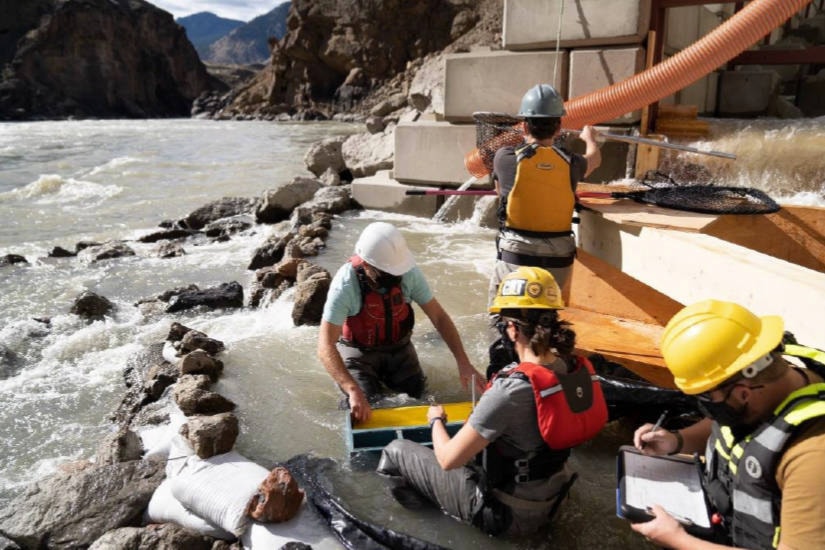by Jack Emberly/Special to The News
In December, the federal government announced $176 million to construct a permanent fishway through the Big Bar landslide on the Fraser River near Lillooet.
In the fall of 2020, 161,000 fish swam past the slide site unaided, according to the Department of Fisheries and Oceans (DFO), while only 8,200 went through the Whooshh fish portal tube system. They weren’t the numbers hoped for.
A fishway is the “only long-term solution [for] reliable fish passage,” and “the long-term survival of fish populations,” concluded the DFO.
Streamkeepers are pleased, but they say much more needs to be done to save northern stocks.
“This [fishway] will greatly help the runs of the upper Fraser,” said Dustin Snyder of the Spruce City Wildlife Association in Prince George.
“But…” he cautioned, “ensuring these stocks have passage is only the beginning. They were classified as endangered even before Big Bar.”
It’s a step in the right direction, according to Don Willimont, a volunteer with Spruce City’s hatchery, but he questions why the fishway decision took so long.
“This is a legitimate crisis for a critical resource, and we have stumbled our way through temporary solutions and half measures for over a year before realizing something more significant was required.”
Both men want better long-term planning and management of the resource.
“These stocks need protection, enhancement, and an official rebuilding plan,” said Snyder.
“Big Bar impacted three years out of the four-year sockeye cycle, and three of the five-year chinook cycle.”
Willimont pointed to the careful maintenance and care of salmon in Alaska as an example of what should be done in B.C.
“Bristol Bay sustains a commercial, recreational, and Indigenous fishery year after year with one of the most productive salmon ecosystems on the planet,” he shared.
“There is a stark contrast in how each of us manage our fisheries. Alaska has made salmon a priority. It makes you wonder where our salmon would be if we acted with the same level of intention.”
But, in 2021 at least, migrating salmon should have easier passage thanks to the clearing operation at Big Bar to date.
Gwil Roberts is the DFO’s director of the Big Bar response.
“We reduced the number of boulders, the amount of debris in the river, widened it, and installed a series of boulders – the nature-like fishway.”
Last April, Kiewit and Sons blasted the East Toe, a rocky projection that further narrowed the river channel.
Roberts said challenges in the rugged remote area have been huge. “About 110,000 cubic metres of rock fell into the river,” explained Roberts.
“It isn’t all critical, some doesn’t make a difference. Kiewit moved 14,000 of it. That was the focus. We opened the river for the vast majority of the later migrating fish.
“In August, the waterfall was not visible the way it was before. We saw a reduced torrent of water, allowing more fish to pass. That’s where the permanent fishway will be.”
Design and construction work should begin this winter with an operational date set for early 2022 salmon runs.
– Jack Emberly is a retired teacher, local author and environmentalist
.
________________________________
• If there is more to this issue, please let us know about it. Email us at editor@mapleridgenews.com. We look forward to hearing from you. In the meantime, like us on Facebook or follow us on Twitter.
